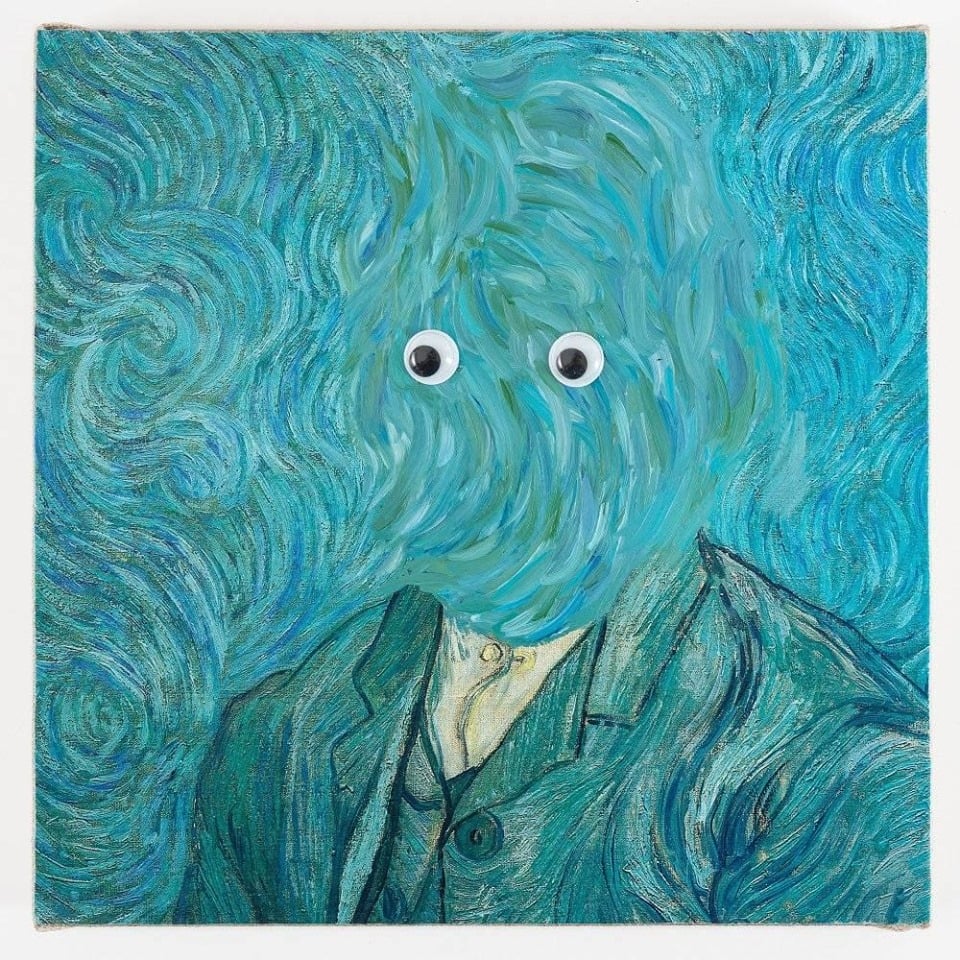
A few hours into the VIP preview of NADA in Miami on Thursday, Emanuel Aguilar of Chicago’s Patron Gallery was almost out of breath. “I haven’t had a morning like this since 2011,” he said. “I haven’t been able to finish conversations.” The 17th edition of the fair, which offers work by emerging artists from 135 exhibitors from around the world, opened to a crush of visitors and brisk sales. By 3 p.m., around 80 percent of the art on Patron’s stand had sold, according to the gallery.
While small and midsize art businesses have struggled to stay afloat in recent years, many of NADA’s dealers have benefitted from the fact that collectors seem to be on a tighter budget these days. “People don’t want to spend half a million dollars right now—they want to spend $20,000,” said Lexi Bishop of the West Hollywood-based Nino Mier Gallery.
NADA also continues to be a fair where collectors can discover artists who may go on to show at larger venues in years to come. In other words, if it’s trend-spotting you want, NADA is the place to be. To that end, we pulled together a selection of themes that emerged from the aisles this year, which may offer some insight into where the market at large is headed.

A ceramic work by Jose Sierra. Photo courtesy of Louis Lefebvre.
Ceramics on Fire
Certain genres were MIA at NADA: there was almost no photography, for example, and very little new-media art. But you could barely turn a corner without bumping into a ceramic sculpture. The medium has attracted artists of all ages—and collectors, too. Within the first few hours of the fair, Galerie Lefebvre & Fils from Paris sold out of its solo display of amoebic ceramic vases by the Venezuelan artist Jose Sierra, priced from $2,500 to $6,500. (The series is inspired by a Gabriel García Márquez text about bananas, which appear to be the fruit of the week.)
Ceramics are appealing to collectors in part because “there aren’t so many artists with a really high price point,” says Louis Lefebvre.

Gordon Robichaux’s solo presentation of Leilah Babirye’s work. Photo courtesy of the gallery.
While Sierra is a dedicated ceramicist, other artists are new to the genre. At 64, Dutch artist Marliz Frencken has only recently embraced the form, having dedicated much of her career to painting. Her ceramics, on view at Althuis Hofland Fine Arts from Amsterdam, are interpretations of the female form—from tall and sinewy, to stout and squat. At least one of the sculptures, priced between €2,400 and €2,800, sold during the VIP preview.
The New York gallery Gordon Robichaux also swiftly sold out its solo booth dedicated to the Ugandan artist Leilah Babirye, including her ceramic, wood, and found-object sculptures (priced from $3,400 to $10,000). Babirye successfully sought asylum in the United States several years ago after being outed as a lesbian in her home country, which put her and her family in danger. Her ceramic sculptures of guardian figures “are trans and queer subjects that represent chosen family in the LGBTQ community,” said gallery co-owner Jacob Robichaux.

Bridget Mullen andDouglas Rieger’s two-person booth at Helena Anrather at NADA 2019. Photo courtesy of Helena Anrather.
Abstract Is Back?
Figurative painting by young artists has dominated the market for several years now. But its death grip may be weakening. While it felt as if almost every booth at NADA last year was stacked with paintings of people or colorful interiors, this year offered a bit more variation. “It’s become so trendy,” Bishop, of Nino Mier Gallery, said. “Even if you had some painting of a poodle, you could find someone to buy it.” But, like any trend, “people eventually start turning away from it. And there is something timeless about abstraction.”
She sold two works by Ethan Cook, whose large compositions are made from hand-woven canvas and painted aluminum, for $32,000 and $28,500. Other prominent abstract works at the fair include layered canvases by Vivian Suter, whose saturated works sold for prices ranging from $25,000 to $35,000 at the Guatemala City-based Proyectos Ultravioleta’s booth.

Bethany Collins, Stand beside her (God Bless America) (2019). Photo courtesy of Patron Gallery.
But many works on view still retained some link to the real world, resisting full-on abstraction. Helena Anrather Gallery from New York sold around half its booth by sculptor Douglas Rieger and painter Bridget Mullen, whose wry canvases appear entirely abstract until you notice an eye drooping over a cylindrical shape, or a hand extending across the surface, for prices ranging from $4,000 to $14,000. “That space between figuration and abstraction feels fresh—it’s like a game to look at the painting and see how it changes,” Anrather said.
Patron Gallery, meanwhile, sold a composition by Bethany Collins that presents piles of letters taken from American hymns for $35,000. “We are reconsidering the boundaries between figuration and abstraction,” said Logan Lockner, the editor of the Atlanta-based publication Burnaway, which is presenting work by five painters from Georgia at the fair.
 artnet News on Facebook:
artnet News on Facebook:
Want to stay ahead of the art world? Subscribe to our newsletter to get the breaking news, eye-opening interviews, and incisive critical takes that drive the conversation forward.
Source

